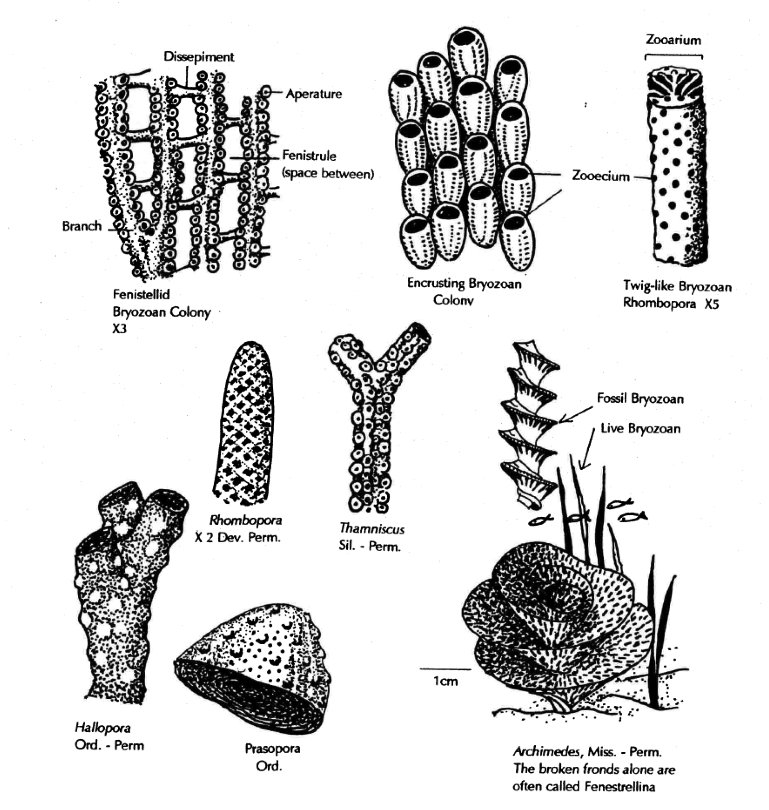Fossils of the Paleozoic: Phylum Bryozoa (The Bryozoans)
Bryozoans (Ordovician to today with no peak period) are animals that live in a colony and excrete a skeleton to support themselves. Sometimes the skeleton is made of minerals, and sometimes it is made of chitin. Bryozoans are primarily marine, but are sometimes found in tidal or delta environments.
Each animal in the colony is called a zooid. Bryozoans appear superficially to have a very similar outward appearance to coral polyps: they are a small animal with tentacles that sweep up material from the water column. However, closer examination of the animal itself reveals that they are much more complex than coral polyps. Coral polyps are a simple pouch with one opening for passing food in and out, and have no other organs. Bryozoan zooids have fully functional organs. The tentacles bring food into a mouth, which then passes to a stomach and intestine. Waste is excreted out a different opening. Where a coral is a cup (one opening for in and out), a bryozoan zooid is a tube with openings at either end.
Because of their varied and easily identifiable forms, Paleozoic bryozoans are extensively used as index fossils. Bryozoans are significant because they are the only major phyla to appear in the Ordovician rather than the Cambrian.

Question a
Sample 12: Branching Bryozoa
These samples can be picked up but please handle them with care.
These are segments of bryozoans. They grow as a long spindly framework (think of a shape like a miniature deer antler). If possible, using a hand lens to examine at each sample for little depressions on the outer surface. These are the little ‘cups’ where each animal (zooid) lived.
Questions b-e
b. If you are a suspension feeder—sweeping up food from the water—would it be better to live in very still water or moderately moving water? Why?
c. The fossils we have are mostly broken pieces. What might this tell you about the energy of the environment that these frameworks eventually ended up in before they were preserved?
d. Referring to Figure 7.4, what environment ranges do the Bryozoa occupy?
e. What type of preservation is displayed in these samples? Explain your reasoning.
